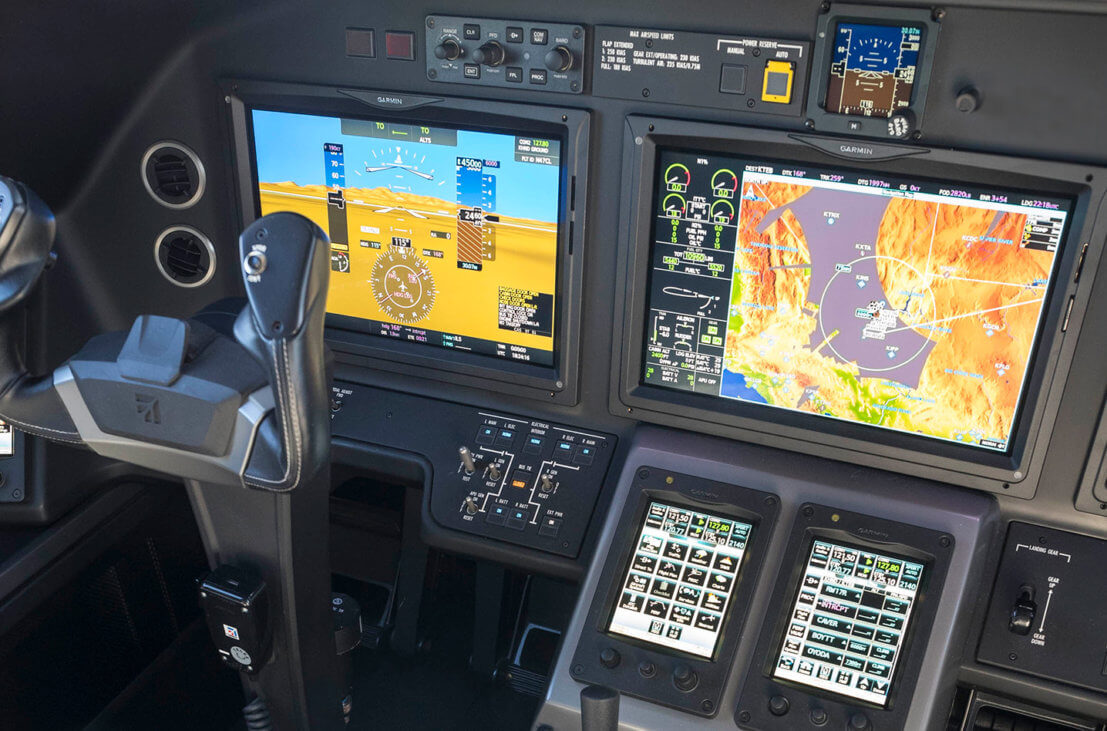
RVSM Overview
In 1997 the FAA issued a Final Rule establishing requirements for operations of U.S.-registered aircraft in airspace designated as Reduced Vertical Separation Minimum (RVSM) airspace. RVSM refers to airspace between flight level (FL) 290 and FL 410, with assigned altitudes separated by a minimum of 1,000 feet rather than the 2,000-foot minimum separation currently required above FL290. The regulations ensure that operators and their aircraft are properly qualified and equipped to conduct flight operations while separated by 1,000 feet, and ensure that compliance with the RVSM requirements is maintained. This amendment makes more tracks and altitudes available for air traffic control to assign to operators, thus increasing efficiency of operations and air traffic capacity.
In 2019 the FAA issued Notice N8900.500 and Advisory Circular 91-85B – Authorization of Aircraft and Operators for Flight in Reduced Vertical Separation Minimum (RVSM) Airspace, which provide clarification and guidance for RVSM operations of aircraft with qualified ADS-B Out equipment in lieu of an authorization. Operators no longer need an LOA, OpSpec or Mspec unless they are operating without ADS-B Out-equipment or they are operating outside of U.S. Airspace.
For detailed information on the implementation of RVSM in US airspace – review the following references:
- Operators Requesting an RVSM OpSpec, MSpec or LOA
- Operators Equipped With Qualified ADS-B Out System
- ADS-B Out RVSM Height Monitoring
- RVSM News
Operators Requesting an RVSM OpSpec, MSpec or LOA
When operating an aircraft that is not ADS-B Out-equipped or operating outside of U.S. airspace, operators “must obtain an operations specification (OpSpec), management specification (MSpec) or letter of authorization (LOA).” Advisory Circular 91-85B Chapter 5 lays out specific directions for operators applying for an RVSM OpSpec, MSpec or LOA. This chapter provides steps for applying, a matrix to determine which authorization group an operator falls in, and things to consider when applying for RVSM authorization.
Advisory Circular 91-85B (PDF)
Operators Equipped With Qualified ADS-B Out System
ADS-B out is playing a big role when it comes to RVSM compliance. Prior to 2019, operators could only receive authorization to operate in RVSM airspace via an OpSpec, Mspec, or LOA to operate in RVSM airspace. With the rollout of ADS-B Out, operators may now receive authorization via Part 91, Appendix G, Section 9. To operate under Section 9, operators must determine that their ADS-B aircraft are RVSM compliant; ensure that pilots know the current RVSM requirements, policies, and procedures; and ensure that the aircraft altitude-keeping equipment performance meets the ADS-B monitoring standards in AC 91-85, Paragraph 4.3.
Operators pursuing Section 9 ADS-B RVSM operations should notify the North American Approvals Registry and Monitoring Organization of their initial flight using the email template on its website. After initial operations, if the ADS-B aircraft and operator meet RVSM requirements, they should “properly annotate the flight plan in accordance with AC 91-85, Appendix B, Paragraph B.3.”
Monitoring of normal operations is an automatic aspect of the ADS-B system. Initial ADS-B operation in RVSM airspace must occur where the FAA can collect ADS-B data and evaluate RVSM performance. As defined in §91.225(a), this airspace extends from Flight Level 290 to 410.
ADS-B Out RVSM Height Monitoring
Altitude-keeping performance monitoring (or Height Monitoring) for RVSM Aircraft equipped With ADS-B out is used “to ensure safe and efficient operations and determine aircraft compliance on an ongoing basis” per AC 91-85B. Aircraft equipped with these systems will be “height-monitored during normal operations at RVSM altitudes when operating in airspace where sufficient ADS-B data is available to the FAA to determine RVSM performance.” This data is available to all US registered aircraft and can be found at the FAA’s performance monitoring website.
Effective Aug. 31, 2021, height monitoring using ADS-B will only be conducted for flights occurring on Mondays. Aircraft due for periodic monitoring or that must verify performance can fly any Monday to obtain and record a monitoring result.
“The mandate for height monitoring remains unchanged and is required every two years or 1,000 hours,” said Brian Koester, CAM, NBAA’s director of flight operations and regulations. “If an aircraft is out of compliance, you’ll need to conduct a flight on a Monday to meet the height monitoring mandate.”
Aircraft operators or owners may verify the current status of their aircraft’s monitoring data at RVSM Approvals in the file labeled “US IGA Operators with Domestic RVSM Authorization under Part 91 Section 9 (ADS-B).”


 International Business Aviation Council Ltd.
International Business Aviation Council Ltd.